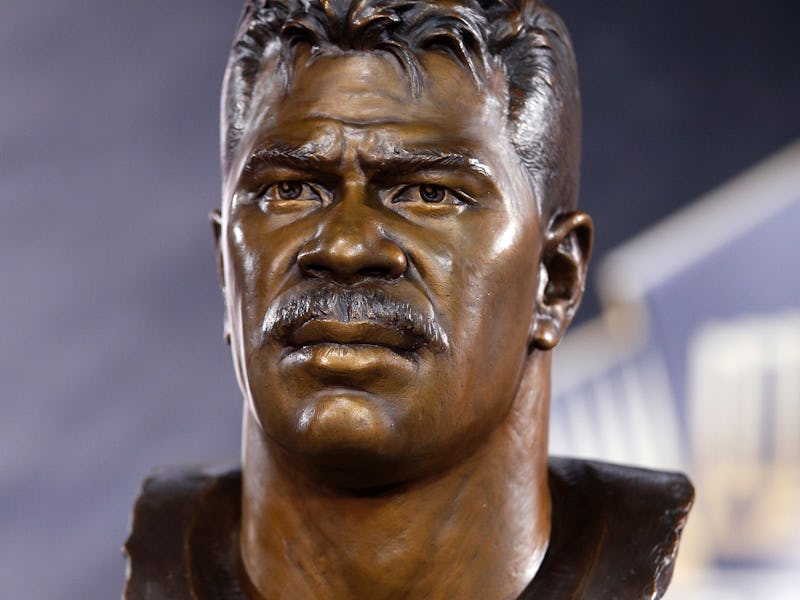No, NFL Players Aren't More Likely to Commit Suicide, CDC Finds
A new study of 3,400 NFL players dismisses the link between suicide risk and playing pro football.

NFL linebacker Junior Seau’s suicide in 2012 turned the devastating impact of chronic brain trauma into a national issue.
A study released today from researchers at the Centers for Disease Control and Prevention, having studied the causes of death for retired NFL players since 1994, suggests Seau’s unfortunate death wasn’t indicative of a link between football and suicide risk. In a new study in the American Journal of Sports Medicine, they report that retired NFL players are at no greater risk of suicide compared to the general U.S. population, despite what’s been suggested in pop culture and science literature.
Seau was not the first NFL player to commit suicide and the high rate of CTE — a form of brain damage known as chronic traumatic encelopathy — among football players is well-documented. But the researchers at the CDC’s National Institute for Occupational Safety and Health, after looking at the suicide death rate for over 3,400 retired NFL speed-position players that played at least five seasons between 1959 and 1988, found that the suicide rate was less than half of what would be expected compared to the general U.S. population. In a similar group of Americans, the suicide rate would have been 25; among the NFL group, there were only 12.
But the study’s findings are far from definitive. For one thing, it didn’t take personal or environmental factors into account: Some people are genetically predisposed to mental illness, and the researchers didn’t control for potential differences in the proportion of these people in the NFL group compared to the general population. The study, notably, doesn’t mention steroid use, which has been popularly linked to suicide risk. And the study has assumed that players who retired before 1988 are representative of the current NFL landscape. Modern players, however, run noticeably faster and hit noticeably harder. The study didn’t factor in the number of concussions players had during the careers.
The NIOSH researchers are careful to note that the study doesn’t resolve the issue of whether suicide is more common among former football players. Whether the increased rate of suicide is supported by the data is one thing — that raging debate won’t be resolved until there’s more definitive research — but until we find out, whether we should allow young Americans to even run that risk (and what a risk it is) is another debate entirely.
Seau, a dynamic, passionate player who made his career with the San Diego Chargers, and who graced one of the best Sports Illustrated for Kids covers ever, took his life after years of depression; after his death, his brain revealed that he had chronic brain damage, caused by repeated blows to the head. He had no official record of concussions, but his family said he did suffer from them. “He always bounced back and kept on playing,” his wife Gina Seau told the Associated Press. “He’s a warrior. That didn’t stop him.”